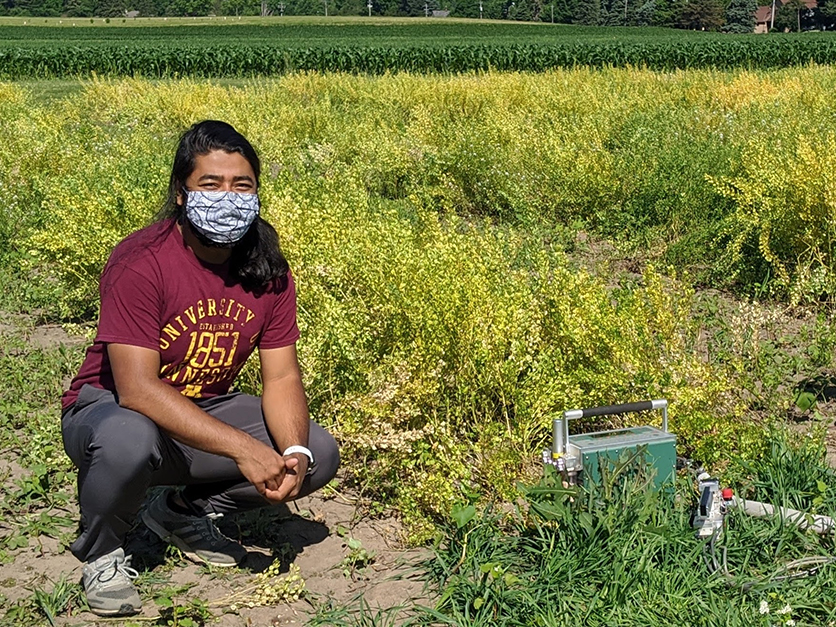On March 23, we celebrate National Ag Day – a day to recognize our nation’s farmers. In addition to providing the most abundant, safest food supply in the world, our farmers are helping tackle climate change, too. In fact, at his confirmation hearing in February, U.S. Secretary of Agriculture Tom Vilsack not only pledged to focus on climate change but stressed the role of the U.S. Department of Agriculture and American farmers in leading efforts to mitigate the effects of climate change.
I hope my research at the University of Minnesota plays a role in helping farmers be part of the solution. In solving a puzzle, sometimes it’s the smallest pieces that complete the big picture. In the climate change puzzle, a once-underappreciated plant called pennycress just may prove itself an essential piece.
As a plant that has spent most of its evolutionary history as a weed, pennycress is gaining new interest as an oilseed crop that can help us piece together solutions to many environmental challenges. The plant, which produces pods shaped like pennies, has the potential to provide financial, environmental and industrial advantages for decades to come.
A new study by the United Nation’s Food and Agriculture Organization finds that soil biodiversity is at the heart of achieving Sustainable Development Goals. As a winter cover crop, pennycress can play a powerful role in restoring soil biodiversity on the farm. Growing cover crops in the off-season is one of the farming practices that helps remove carbon dioxide from the atmosphere and convert it to soil organic matter. They help hold the topsoil in place, preventing unwanted nutrient loss and protecting water quality. They suppress weeds, leading to reduced chemical spraying. Pennycress even supports pollinators in early spring when their food source is most limited.
Unlike most other cover crops, pennycress has the potential to return cash to the farm. It can provide a very low carbon intensity oil to be turned into renewable diesel or biodiesel. In addition to soybean oil, U.S. biodiesel producers will likely need more oilseed options to achieve the National Biodiesel Board’s ambitious goal of 6 billion gallons in the U.S. by 2030 – more than double today’s production.
My Ph.D. research aims to understand how we can achieve high-yielding and high-oil pennycress that complements the soybean cropping system. At least one startup company, CoverCress Inc., has plans to commercialize a form of pennycress by 2022. This is exciting and groundbreaking.
If farmers can capture financial value from the cover crop, they reap not only the sustainability benefits but also profit. In the U.S., cropland shrinks every year. Farmers grow more with less, largely thanks to technology. The idea of sustainable agriculture intensification is that farmers use the same amount of land for more output – and pennycress can help achieve just that.
I can’t think of a more fitting culmination to a pennycress crop’s extraordinary lifecycle than to be transformed into cleaner burning, renewable biofuel. Through biodiesel and renewable diesel, this plant’s benefits will live on, providing exceptional lifecycle greenhouse gas emissions reductions and another tool in tackling climate change.
Pennycress shows us that if we see all the pieces, even the hardest puzzles have a solution.
For more news, go to www.agri-pulse.com.
Zenith Tandukar is a Ph.D. candidate in the Department of Agronomy and Plant Genetics at the University of Minnesota. He serves as a co-chair of the Next Generation Scientists for Biodiesel. For more, visit BiodieselSustainability.com.

